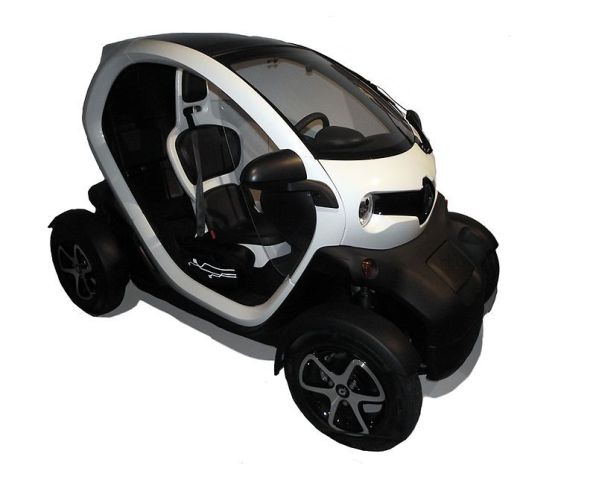
An impeccable new look for city cars!
Transparency and lightness thanks to organic glass
The continued increase in the amount of automotive glazing required is difficult to reconcile with the weight of mineral glass. This is why, except for windscreens and sliding windows where it is still the de facto material, car manufacturers are increasingly using organic glass to satisfy our passion for transparency. Some manufacturers, such as Daimler, Seat and Honda use polycarbonate. Although long used only in headlights, it now features in the transparent roofs and rear quarters of their models. Injection moulding and "plasma" treatment of the polymer serve to create complex-shaped windows that are resistant to both shock and abrasion. They are even turning up in back windows with formulations that enable various elements to be printed on, such as the defrost system or antenna, and even a colouration that reduces infrared rays which are the main cause for the insides of a car heating up.
Twizy, the mini-car with panoramic aspirations
Polycarbonates' eternal rival, acrylic glass, is not to be outdone however. And it intends to shine brightly in the glazing of new models on the "carbon light" diet. Arkema’s most recent development, Altuglas ShieldUp, was selected for manufacturing the panoramic roof of the electric, two-person Renault Twizy. And for good reason, too! This acrylic resin is derived from a polymerisation process controlled at the nanometric scale by the addition of an elastomer and offers resistance and transparency that are simply miles ahead of what can be achieved with a standard PMMA (polymethyl methacrylate) while keeping its original advantages: it is insensitive to UV rays and weighs 50 to 60 % less than glass./p>
Thanks to its light weight, its use in car glazing therefore enables a vehicle's autonomy to be improved. Another decisive argument in its favour: it does not require a protective varnish, except on special parts, such as the side deflectors, where regulation so requires..
Back to the future with plastics
In order to win back cities and the hearts of city dwellers, the car is taking on the characteristics of sustainable mobility: electric engine, small footprint and, where possible, car sharing. Along with light weight, these specifications require a minimalistic approach to design and equipment. However, these constraints have proven to be stimulating and have inspired atypically-shaped vehicles whose manufacture requires solutions previously used for recreational vehicles and those that do not require a license. After opting for a mixed aluminium-ABS solution for its Bluecar intended for the Parisian Auto Lib network, Bolloré adopted an ABS/PMMA integral body, dyed in the mass , for its latest model of electric city car, the very 70s-looking Bluesummer.
Toyota opted for the same multi-layer acrylic resin for its futuristic i-Road tricycle which is also intended for the car-sharing market. The Eon Motors start-up was even bolder in its choices for its 3-seater Weez. This electric vehicle, that does not require a license, has a thermoformed plastic interior mounted on a composite honeycombed frame and has an unladen weight of 250 kg as a result. However, the grand prize for originality and simplicity has to be given to the surprising Belgian E-Car 333 tricycle available in six different versions. Thanks to its laminated linen body placed on a recycled steel frame and its recycled plastic underbody, it offers, thanks to its Lithium-Polymer battery, an autonomy of 150, 200 or 300 km depending on the type of engine.
A new resin to attract manufacturers
Total invested in the development of innovative solutions corresponding to its activities linked to the automotive industry: fuels, plastics, adhesives, gaskets, surface treatments, etc. The highlight of this strategy is the unveiling of the "Bio-TPSeal" concept car designed by the engineers working in its Refining & Chemicals branch. This type of operation designed to test trends and innovations before marketing a vehicle is obviously unprecedented for an oil producer. In reality, its first aim is to promote the advantages of its Bio-TPSeal resin, a mix of bio-sourced polylactic acid (PLA) and polyethylene (PE) to car manufacturers and equipment manufacturers.
The concept car's body made with this copolymer intends to demonstrate that it is now possible to design rigid, light and solid vehicles, without a chassis or metallic reinforcements, using two rotomoulded shells on which all of the vehicle's other functional parts can be placed.. Another advantage is that this 100% plastic body weighs less than 85 kg, while an equivalent metallic structure weighs over 300 kg on average. Testing of the prototype revealed that it met impact-resistance standards. The polymer also offers greater freedom with regard to shapes and finishes, the latter being achieved by mass dyeing or painting. And, to end on a green note, it is easily recyclable.





